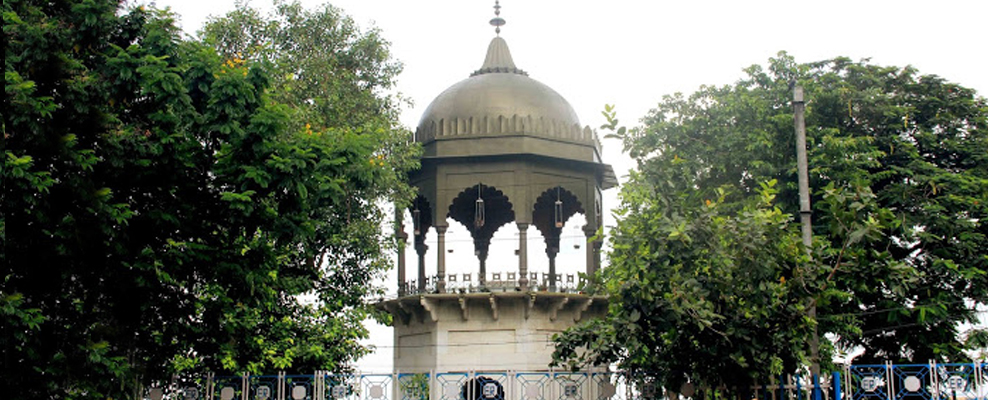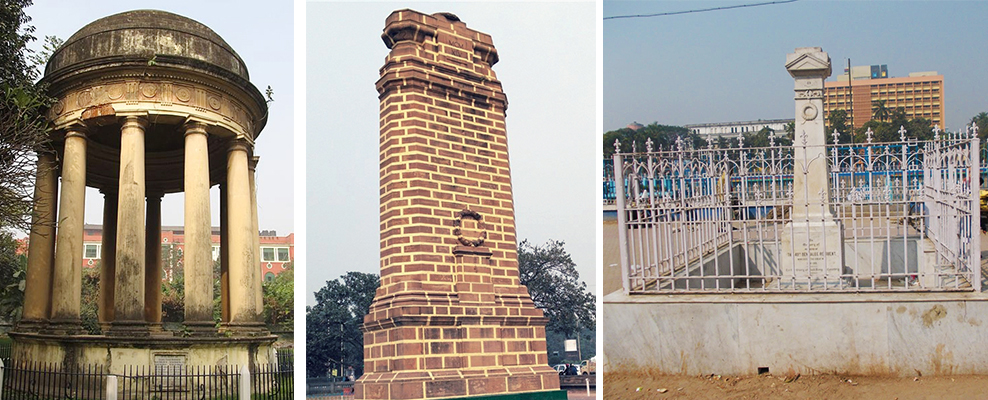Kolkata houses several memorials in memory of the martyrs of numerous wars. From the well-known towering memorials of British soldiers to hidden memorials dedicated to unknown regiments. Kolkata’s Memorials not only covers a wide range of history (from the oldest cenotaph, the Rohilla Monument erected in 1794), but also diversified architectural styles.
LASCAR WAR MEMORIAL
Built in 1924, the Lascar War Memorial was erected to honor the memory of 896 merchant seaman or Lascars of undivided Bengal and Assam who laid down their lives in the First World War by shipping and mercantile companies. The 100-foot monument is situated on Napier Road, near Prinsep Ghat and is also one of the landmarks on the riverfront. It was designed by William Ingram Keir, the well-known architect who also designed the Kidderpore Bridge and the buildings of the Bengal Engineering College (now IIEST). It was inaugurated by Lord Lytton, then Governor of Bengal in 1924. The four-sided column of Indo Saracenic architecture has a design of a prow of an ancient galley projecting from each of its sides, capped by four small minarets and a large dome. The undulating lines beneath symbolise waves, with balconies and trellises to give a distinctly Indian look.

GWALIOR MONUMENT
Referred to as the “Pepper Pot” by Desmond Doig in his volume on the Heritage of Calcutta, the Gwalior Monument is further described by him “as sitting prettily by the river”. It is one of the many landmarks dotting the riverfront of the city and is located opposite the Water Gate of Fort William. Erected in 1847 by Lord Ellenborough, erstwhile Governor General of India, in memory of officers and men who died during the Gwalior campaign in 1843, this memorial was also called Ellenborough’s Folly. It was designed by Colonel H. Goodwyn of the Bengal Engineers and constructed by Jessop and Company. It has a marble base with a sarcophagus on top. It is covered by a metal cupola which, incidentally is made of gunmetal – melted from the guns captured from the Marathas by the British.
ROHILLA MONUMENT
The oldest cenotaph in Kolkata is the Rohilla Monument. Built in 1794, in the churchyard of the then newly-consecrated St John’s Church, this 15-meter high memorial consists of a small hemispherical roof that is placed atop 12 Doric pillars. The structure is more than 200 years old and commemorates the soldiers killed in the war against the Rohilla Afgans in 1793 led by General Abercromby who had led the British forces in the Second Rohilla War. About 25,000 Afgans were killed in that operation.
THE CENOTAPH
Built in 1924, the cenotaph, which in Greek, means an empty tomb, was built in memory of British soldiers who laid down their lives in the First World War. The sandstone structure is stark in its simplicity and is a replica of the cenotaph in Whitehall. London. It is located very prominently on the maidan with the Eden Gardens on its left and the Raj Bhavan facing it. The words “THE GLORIOUS DEAD” inscribed on the eastern side of the monument. It had brass plaques with the names of the fallen which were removed from the monument in 1959 and taken to St John’s Church, where they can still be seen.

BENGALI WAR MEMORIAL
A monument to 49 Bengalis who laid down their lives in the First World War is located just at the entrance of the east gate of College Square. Bengalis were noted more for their love for the arts and culture and their active participation to the war effort was all the more memorable. The white structure has the inscription “In memory of the members of the 49th Bengalee Regiment who died in the Great War, 1914-1918. To the Glory of God, King and Country”. The other three sides of the memorial base have the names, ranks and the districts of the soldiers.
G.M. Kapur is the Director, INTACH Conservation Institute, Kolkata. INTACH is India’s largest non-profit membership organization dedicated to conservation and preservation of India’s natural, cultural, living, tangible and intangible heritage. Its mission is to sensitize the public about the pluralistic cultural legacy of India, instill a sense of social responsibility towards preserving our common heritage, protect and conserve our natural heritage, document unprotected buildings of archaeological significance and develop policy and regulations to protect our heritage.
